Backpacking Europe as an American is more than just ticking off bucket-list destinations—it’s learning to navigate visa rules without accidentally overstaying, mastering the art of packing light, and figuring out why Wi-Fi passwords in hostels are always so complicated.
This isn’t a guide for the perfectly planned, Pinterest-ready traveler. It’s for those who want to blend in, soak up every cultural quirk, and maybe save a few bucks along the way (hello, €3 pastries with TooGoodToGo and budget FlixBus or Blablacar rides). Whether you’re cooking in hostel kitchens, dodging pickpockets, or chatting with locals through broken French and Google Translate, this guide has you covered with practical tips and smart strategies that will make you feel confident about embarking on your new adventure.
Pre-Trip Planning

1. Budgeting & Finances
Every great trip begins with a solid(ish?) financial plan, and your European adventure is no different. Let’s start by tackling budgeting and finances to set the foundation for an incredible journey.
Estimate Costs:
- Western Europe: $70–$120/day for meals, accommodation, and local transport (France, Italy, Germany).
- Eastern Europe: $30–$60/day—countries like Poland, Hungary, and the Balkans are much easier on the wallet.
- Scandinavia: $100–$150/day—budget for high costs, like $6 coffee and $25 lunch. Stick to grocery stores for meals to save some money.
Banking Tips:
- Notify Your Bank: Call or update your bank with your travel plans 1–2 weeks before your departure to prevent your it from flagging international transactions as fraud. Some banks allow you to set this in their app.
- Check for Foreign Transaction Fees: Look at your card’s terms or call customer service to confirm whether you’ll pay extra fees (usually 1–3%) for international purchases.
- Reimbursed ATM Fees: Open an account with an equivalent to Charles Schwab or Fidelity. With these accounts, you’ll get ATM fees reimbursed monthly, even for withdrawals abroad. Be sure to check if your ATM card is accepted on major networks like Visa or Mastercard.
Cash vs. Card:
- Carry Cash: Small towns, rural areas, and some local markets might not accept cards. Euros cover most of Europe, but don’t forget pounds (UK), kronor (Sweden), or kuna (Croatia).
- Apple Pay & Google Pay: Widely accepted in urban areas across Europe but less so in rural regions or smaller shops. Always have a physical card or cash as a backup.
- Currency Exchange Tip: Avoid exchanging currency at airports—they usually have the worst rates. Use an ATM upon arrival instead for better exchange rates or a currency exchange office in a non-touristy area. Check the current exchange rate on sites like XE.com
Savings Strategies:
- Travel Rewards Cards: Use cards like Chase Sapphire Preferred or Capital One Venture for points on flights, accommodation, and more. Redeem these points for free or discounted travel.
- Under-25 Discounts: Carry an ISIC (International Student Identity Card) if you’re a student. Many hostels, museums, and transport services offer discounts.
Apps for Cheap Travel:
- Blablacar: Share rides with locals to save money on intercity travel.
- Omio & FlixBus: Affordable options for buses and trains.
- Eurail Pass: Great for multi-country train travel—prices depend on duration and destinations.
- Budget Flights: Book early with airlines like Ryanair, EasyJet, or Wizz Air. Check baggage policies carefully, as their fees can double your ticket price.
- Grocery Store Meals: Cooking in hostel kitchens or grabbing local supermarket meals can save you significant money compared to dining out.
+Bonus Banking Tip: If your bank charges hefty foreign fees and you can’t switch, get a Wise or Revolut multi-currency card. It allows you to hold money in multiple currencies and spend at near-market exchange rates with low fees.
2. Choosing Your Route & Destinations
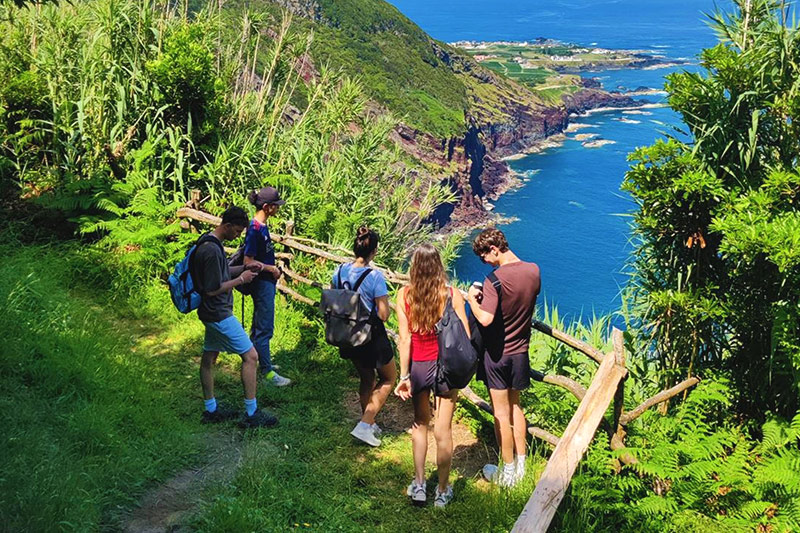
Your itinerary depends entirely on your travel style—whether you prefer to plan every detail in advance or figure things out as you go. We recommend leaving room for flexibility, especially if you’re new to this. Having a general plan of where you want to go is great, but keeping it open enough to switch things up along the way can lead to the most unforgettable experiences.
Travel Seasons:
Check out our seasonal guide on The Best Time to Backpack Europe for more detailed information and itinerary recommendation.
Spring (April–June):
- Why it's great: The weather is mild, making it perfect for walking tours, outdoor adventures, and exploring without sweating buckets. Plus, you’ll beat the summer tourist rush and score better deals on flights and accommodation.
- Activities to try: Hike Italy’s Cinque Terre trails with blooming flowers around you or bike along tulip fields in the Netherlands.
Summer (July–August):
- Why it's tricky: This is peak season, meaning higher prices, crowded attractions, and long lines. However, it’s also the best time for coastal spots like Croatia’s Adriatic coast or the Greek Islands.
- Pro tips: Book your transport and stays weeks (or months) in advance. Stick to smaller towns or rural areas like Portugal’s Alentejo region to dodge tourist-packed cities.
Fall (September–October):
- Why it’s a sweet spot: Crisp weather, colorful foliage, and fewer tourists make it perfect for exploring. Autumn festivals like Oktoberfest in Germany or wine harvests in France add to the charm.
- Activities to try: Explore the autumnal vibes of Budapest or enjoy vineyard tours in Tuscany during grape-picking season.
Winter (November–March):
- Why it’s worth considering: If you’re on a tight budget, winter can save you serious cash. Flights and accommodation tend to be cheaper, and attractions are less crowded.
- Activities to try: Wander through magical Christmas markets in Germany or Austria, ski in the Swiss Alps (Check out the Best Ski Hostels in Europe!), or enjoy the relative warmth of Southern Spain.
Cluster Your Route:
Traveling in logical groups saves money and time. Constantly crisscrossing the continent will not only drain your budget but also leave you exhausted. Think of your route as a connected web rather than random dots.
Example Routes by Region:
- Western Europe: Paris → Amsterdam → Berlin → Munich → Zurich.
- Eastern Europe: Prague → Krakow → Budapest → Belgrade → Sofia.
- Southern Europe: Barcelona → Madrid → Lisbon → Seville → Porto.
- Scandinavian Loop: Copenhagen → Stockholm → Oslo → Bergen.
How to Plan Efficiently:
- Use tools like Rome2Rio or Omio to check transport options (trains, buses, flights).
- Eurail passes are great for multi-country train travel but only make sense if you’re hopping between destinations frequently.
- Consider low-cost airlines (Ryanair, EasyJet) for longer distances.
Hidden Gems & Outdoors
Big cities like Paris or Rome are must-sees, but they can also feel overwhelming with crowds, queues, and inflated prices. Hidden gems allow you to slow down and experience Europe’s other side, away from the typical tourist spots.
Ideas to Add to Your Route:
- Bulgaria: Horseback ride through the Rila Mountains to take in untouched alpine landscapes.
- Portugal: Surf at Ericeira or Peniche, two hidden surfing hubs loved by locals.
- Spain: Hike the Picos de Europa, a rugged mountain range with jaw-dropping scenery and fewer tourists than the Pyrenees.
- Poland: Wander through the ancient Białowieża Forest, one of Europe’s last primeval forests and home to rare European bison.
Balance Cities and Rural Areas
Cities are filled with history, culture, and food, but if you stick to just urban areas, the trip can start to feel repetitive—museums, landmarks, and crowds, on repeat. Rural areas provide a break from the chaos and let you experience nature, quiet, and local charm. Balancing the two ensures you’ll appreciate both sides of Europe without burning out.
Activities to Add Variety:
- Take free walking tours in cities like Berlin, Krakow, or Prague.
- Spend a day kayaking or hiking through national parks.
- Try local rural activities like wine tasting in Tuscany, cheese-making in Switzerland, or olive picking in Greece.
Not every day needs to be packed with activities: Schedule some downtime—whether it’s sipping coffee in a quiet French village or hiking a trail in Slovenia.
3. Travel Documents & Visas

Traveling through Europe requires more than just a backpack—it demands the right paperwork.
Schengen Visa Rules 90-Day Limit:
- Americans can stay in the Schengen Area (27 European countries, including France, Italy, and Germany) for up to 90 days within a 180-day period without a visa. This means once you’ve spent 90 days in Schengen countries, you’ll need to leave and spend time outside the area before you can return.
- The 90 days don’t need to be consecutive; you can spread them out over six months. However, overstaying can result in fines, deportation, or even a ban from re-entering Europe.
How to Track Your Days: Use tools like the Schengen Visa Calculator to avoid overstaying. It calculates how many days you’ve used and how many remain within the 180-day period.
Countries in the Schengen Area:
- Examples: France, Spain, Germany, Italy, Greece, Austria, Portugal, the Netherlands.
- Non-Schengen examples: UK, Ireland, Croatia, Turkey, and much of the Balkans.
Extending Beyond 90 Days:
- National Visas: If you want to backpack for more than 90 days in Schengen countries, apply for a national visa for the country where you’ll spend the most time (e.g., a French long-stay visa or a German D-visa). These visas often allow stays of 6–12 months but must be applied for before you leave the U.S.
- Strategic Itinerary Planning: Combine Schengen and non-Schengen destinations to extend your trip legally. Example itinerary:
- 60 days in Schengen countries.
- 30 days in non-Schengen areas like the UK, Turkey, or Serbia.
- Return to Schengen for the remaining 30 days.
Visa Requirements for Non-Schengen Countries:
- UK & Ireland: Americans can stay for up to 6 months without a visa in both the UK and Ireland.
- Turkey: A visa is required but can be obtained easily online through their e-Visa system (about $35).
- Balkans (e.g., Croatia, Montenegro, Albania): Generally visa-free for up to 90 days.
- Russia: Requires a visa, which involves a more complex application process, including an invitation letter. Plan well in advance.
- ETIAS (Effective 2025): Starting in 2025, Americans will need an ETIAS travel authorization to enter Schengen countries. It’s a simple online form that has a small fee and is valid for three years or until your passport expires.
Passport Validity:
- Ensure your passport is valid for at least 6 months beyond your travel dates, as many European countries won’t let you in if it’s close to expiring.
- If renewing, allow 8–12 weeks for processing or pay for expedited service (3–5 weeks).
Travel Insurance: Many Schengen countries require proof of travel insurance that covers medical expenses (minimum €30,000 coverage). Popular providers include World Nomads, SafetyWing, and Allianz Travel Insurance.
Health Insurance: Most U.S. health insurance plans do not cover international medical costs. Consider purchasing supplemental travel health insurance. Bring your insurance card and know how to contact your provider in case of an emergency abroad.
Tips to Avoid Trouble at Borders:
- Keep your return ticket or proof of onward travel handy, as border agents may ask for it to confirm you’re not overstaying.
- Carry proof of sufficient funds (e.g., bank statements, cash, or credit cards), as some countries want to ensure you can support yourself during your trip - but this is rarely asked.
- Dress appropriately and be polite at immigration checkpoints—first impressions matter more than you think!
4. Packing Essentials: Minimalist Packing

Packing Essentials:
- Choose multi-purpose clothing items, like a lightweight jacket that works as both rainwear and a windbreaker or shoes that are comfortable for walking and stylish enough for a night out.
- Stick to a 1–2–3 Rule: 1 jacket, 2 pairs of shoes, and 3 pairs of bottoms, with plenty of interchangeable tops.
- Use packing cubes to organize and compress your clothes—it’s a game-changer for maximizing space in your backpack.
Why Minimalism Matters: Overpacking is a rookie mistake. Lugging around a heavy backpack across cobblestone streets, up hostel stairs, and onto crowded trains will make you curse every “just in case” item you brought.
Tech Gear
- Power Bank: A high-capacity power bank (10,000mAh or more) is essential for long travel days or when you’re away from outlets. Look for models with multiple USB ports to charge multiple devices.
- Universal Plug Adapter: Europe uses various plug types (C, E, and F in most countries, G in the UK/Ireland). A universal adapter will cover all bases. Bonus points if it includes USB ports.
- Offline Maps: Download maps from Google Maps or apps like Maps.me to avoid getting lost in areas with poor connectivity. Mark key locations like your hostel, train stations, and must-visit attractions in advance.
- Other Useful Tech: Noise-canceling earbuds or headphones for trains, flights, or noisy dorms. A lightweight laptop or tablet if you’re working remotely. A compact travel power strip if you’re traveling with multiple devices—it’s a lifesaver in hostels with limited outlets.
Seasonal Packing
Winter (November–March):
- Pack layers: thermal shirts, fleece-lined leggings, and a waterproof jacket.
- Include a scarf, gloves, and a beanie for colder climates like Scandinavia or the Alps.
- Choose sturdy, waterproof shoes—snowy cobblestones are not forgiving.
Summer (June–August):
- Stick to breathable, lightweight fabrics like cotton or linen.
- Bring a compact, quick-dry towel for beaches or hostel showers.
- Pack sunscreen and a reusable water bottle (Europe has plenty of drinkable tap water).
Year-Round Essentials:
- A compact umbrella or a packable rain jacket for surprise downpours.
- A lightweight scarf or shawl—it’s versatile for chilly planes, modesty in religious sites, or as a makeshift picnic blanket.
Safety Items
- Padlock: Most hostels provide lockers but not locks. Bring a sturdy padlock (preferably a combination, so you don’t risk losing keys).
- Anti-Theft Backpack: Opt for a backpack with hidden zippers or anti-slash material, especially if you’ll be exploring crowded tourist areas.
- Leave Prohibited Items at Home: Items like pepper spray, knives, and even certain medications may be restricted in Europe. Research what’s allowed in your destinations. If you’re unsure about an item, err on the side of caution—airport security in Europe is strict.
Check out: Top 3 Locks for Hostel Lockers (Lock It or Lose It)
Extra Tips for Smart Packing
- Pack Light, Pack Smart: Keep your bag under 20 lbs (9 kg) to avoid checked baggage fees on budget airlines like Ryanair. Roll your clothes instead of folding to save space and reduce wrinkles.
- Documents & Essentials: Keep your passport, travel insurance details, and itinerary in an easily accessible folder. Carry a reusable tote bag for groceries or day trips—it’s environmentally friendly and often required in European stores.
- Laundry Essentials: A travel clothesline is useful for drying as dryers aren't common in Europe.
5. Booking Transportation
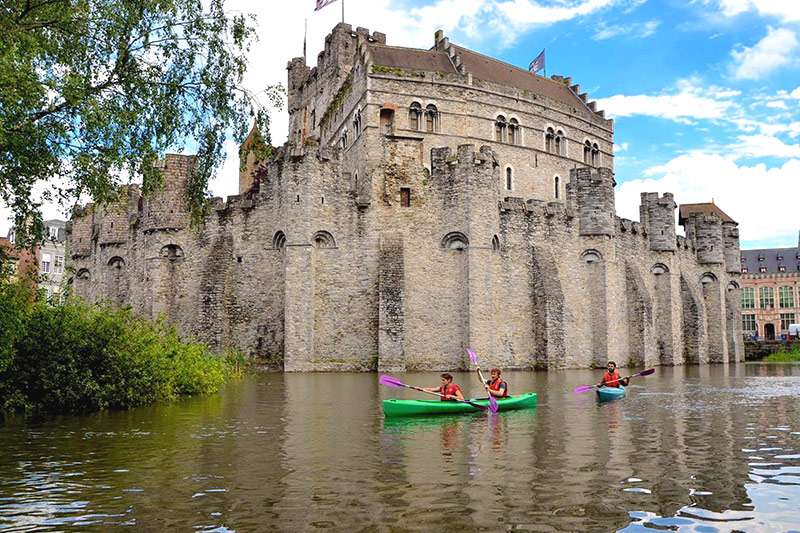
Apps to Use
- Skyscanner: Best for flights, including budget airlines. Use the "Everywhere" feature to find cheap flights to destinations you hadn’t considered.
- FlixBus: A go-to for budget-friendly intercity bus travel. Prices can start as low as €5, and routes connect major cities and smaller towns. Expect Wi-Fi, USB charging ports, and comfortable seats. It’s slower than trains but perfect for saving money.
- Rome2Rio: Ideal for route planning. Enter your start and destination, and it shows all travel options (trains, buses, flights, ferries) with estimated costs and times.
- Omio: Combines train, bus, and flight bookings into one easy-to-use app, allowing you to compare and book on the spot.
- Skiplagged: Finds “hidden city” flights, where you book a ticket with a layover and disembark at the layover city instead of the final destination. Saves money on flights, but only pack carry-on luggage—your checked bag will continue to the final stop.
- BlaBlaCar: A carpooling platform where drivers post their routes (usually across countries), and passengers pay a fee to join. It’s often cheaper, faster, and more comfortable than public transport. They also have a bus equivalent to Flixbus which you can check out in case Flixbus is sold out.
Comparing Transport: Buses vs. Trains vs. Budget Airlines vs. BlaBlaCar
Buses:
- Best For: Budget travelers who don’t mind longer travel times. Great for short to medium distances (e.g., Prague to Vienna).
- Pros: Extremely cheap, flexible schedules, and direct routes.
- Cons: Slower than trains and less comfortable for overnight journeys.
Trains:
- Best For: Efficient and scenic travel between major cities and regions (e.g., Paris to Amsterdam).
- Pros: Comfortable, eco-friendly, and faster than buses. No airport hassle.
- Cons: Expensive unless booked in advance.
Budget Airlines (Ryanair, WizzAir, EasyJet):
- Best For: Long distances where trains and buses take too much time (e.g., Rome to Barcelona).
- Pros: Cheap fares, fast travel times.
- Cons: Hidden fees, such as baggage charges and seat selection costs, along with strict luggage rules, can add up quickly. Additionally, many budget airlines operate from remote airports, which may require extra transportation expenses. Be sure to account for the cost of getting to and from the airport, as well as any food or drinks you might purchase while waiting for your flight or during the journey.
BlaBlaCar:
- Best For: Flexible and affordable travel between cities and towns, especially where train or bus routes are limited.
- Pros: Faster and more comfortable than buses, social experience, and often cheaper than public transport.
- Cons: Requires coordination with the driver and isn’t ideal for last-minute travel.
Eurail vs. Alternatives
Eurail Pass:
- Who It’s For: Great for travelers covering multiple countries and planning frequent train travel.
- Pros: Unlimited travel within its validity period, access to high-speed trains, and flexibility for spontaneous trips.
- Cons: Expensive if you’re visiting only a few destinations or not using trains often.
- Example: Perfect for routes like Paris → Amsterdam → Berlin → Prague.
Point-to-Point Train Tickets: Cheaper than Eurail if booked in advance, especially for specific routes.
Regional Passes: Ideal for exploring one country or region extensively.
Tips for Booking Transportation
- Plan Ahead: Flights and high-speed trains are cheapest when booked weeks or months in advance.
- Travel Off-Peak: Choose midweek or midday travel times for lower fares.
- Check Luggage Policies: Budget airlines and some buses have strict weight and size limits—pack light to avoid fees.
- Leverage Night Travel: Overnight trains and buses save on accommodation costs and maximize your travel time.
6. Recommended Apps

Google Translate: A must-have for navigating language barriers across Europe. Download languages for offline use to stay prepared in areas without Wi-Fi.
- Key Features:
- Camera Translation: Translate menus, signs, and documents instantly by pointing your camera.
- Conversation Mode: Real-time translations for seamless interactions with locals.
- Phrasebook: Save common phrases for quick access.
- Pro Tip: Download the languages of your main destinations before departure—offline mode is a lifesaver when you’re stuck without a signal.
Currency Converter (XE or Revolut):
- XE: Quickly calculate exchange rates between USD and local currencies.
- Revolut: More than just a converter, this app doubles as a digital wallet with no foreign transaction fees, free currency exchanges at market rates, and multi-currency accounts.
HostelWorld: The ultimate app for booking hostels. The app has special features like hostel chats and events calendars.
TooGoodToGo: Find affordable, surplus food from local restaurants, bakeries, and supermarkets.
- Save up to 70% on meals while reducing food waste.
- Perfect for budget-conscious travelers who enjoy trying local cuisine.
- Example: In Paris, you can get leftover pastries from boulangeries for €3 instead of €10.
- Ride-hailing apps for short distances or areas with limited public transport.
- Uber: Available in major European cities.
- Free Now: Common in Germany, Spain, and Eastern Europe. Includes taxis and car-sharing options.
- Bolt: Known for lower prices and availability in Eastern Europe.
- Pro Tip: Compare fares across these apps for the best price. Free Now often integrates local taxis.
- The ultimate app for navigating public transport in major European cities like London, Berlin, and Paris. Tends to give more accurate information than Google Maps.
- Pro Tip: Download the city map offline for uninterrupted use in areas with poor connectivity.
- Widely used for communication across Europe. Many locals and businesses prefer it over standard calls or SMS.
III. On-the-Road Tips
1. Accommodation

Hostels: Hostels are a backpacker’s go-to, offering budget-friendly stays and great social opportunities. Use Hostelz.com to find accommodations tailored to your needs:
- Female Solo Travelers: Hostels with female-only dorms and enhanced security.
- Party Hostels: Ideal for nightlife lovers with events like pub crawls and themed parties.
- Quiet Hostels: Perfect for travelers seeking restful nights, often rated highly for cleanliness and tranquility.
Pro Tip: Check recent reviews to ensure the hostel meets your expectations and has maintained quality.
Other Accommodation Options
- Booking.com (Hotels & Hostels): A vast range of hotels and hostels in every budget.
- Airbnbs: Ideal for travelers looking for a home-away-from-home experience. Usually more expensive.
- Trusted House Sitters: Great for those who want free accommodation in exchange for looking after someone’s home or pets.
- Hostel Volunteering: Some hostels offer volunteer programs where you can work a few hours a day in exchange for free or discounted stays. Check out our article on the Best Backpacker Hostel Jobs.
2. Food & Drink
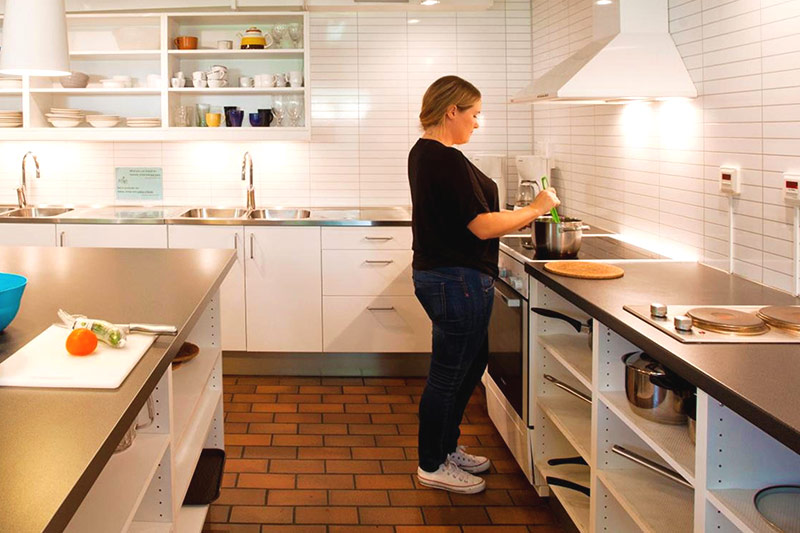
-
Grocery Stores: Buy local staples—bread, cheese, fresh produce—for affordable meals. Many supermarkets have deli counters with pre-made dishes, perfect for a quick bite.
-
Hostel Kitchens: Many hostels have communal kitchens where you can save by cooking your own meals. Keep meals simple—pasta, stir-fries, and sandwiches are easy go-tos.
-
Too Good To Go: This app connects you to restaurants, bakeries, and supermarkets throughout Europe offering unsold food at heavily discounted prices, reducing waste and saving you money.
Freebies:
- Free City Tours: Many cities have free walking tours led by local guides. While technically free, tipping the guide is customary (€5–€10 is standard).
- Aperitivo in Italy: During aperitivo hours (usually 6–8 PM), order a drink and enjoy complimentary snacks or buffets. A drink might cost €8–€12, but you’ll get a full meal’s worth of food.
- Museum Free Days: Many museums offer free entry on specific days. For instance, the Louvre in Paris is free on the first Sunday of the month from October to March.
3. Staying Safe & Healthy
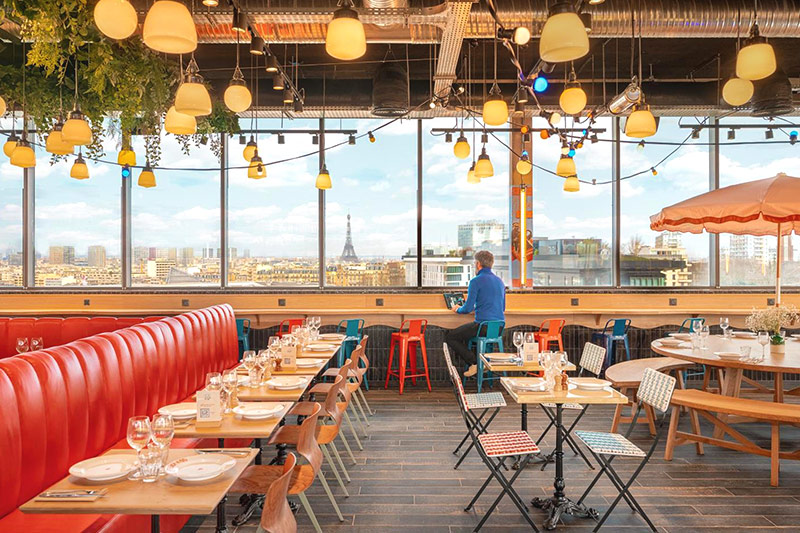
Keep Valuables Secure:
- Store essentials like your passport, credit cards, and cash in a money belt, hidden pouch, or anti-theft backpack.
- Always use a padlock to secure valuables in hostel lockers.
Avoid Flashy Displays:
- Keep expensive items like jewelry, watches, and cameras discreet to avoid becoming a target for theft. Better yet, don’t pack them.
- Avoid flashing large amounts of cash in public—keep small bills in an easily accessible spot.
Read: Top 3 Locks for Hostel Lockers (Lock It or Lose It)
Be Aware of Scams: Scams vary from country to country, so research them before you go.
- Bracelets & Roses Trick: Street vendors may approach you with a “free” bracelet or flower, only to demand payment after you accept.
- Pickpocket Diversions: Common distractions include people spilling drinks on you, asking for directions, or creating a commotion. These diversions often serve as covers for pickpockets.
- Fake Charity Collectors: Avoid signing “petitions” or donating to street “charities” unless you’re certain they’re legitimate.
Save Emergency Contacts:
- Local emergency number: 112 works EU-wide for police, ambulance, and fire.
- Know the contact details of the U.S. embassy or consulate in each country you visit. Use travel.state.gov for an updated list.
- Save your bank’s international helpline for lost or stolen cards.
Backup Documents: Keep digital copies of your passport, travel insurance, and tickets stored securely on your phone and cloud storage (e.g., Google Drive). Carry hard copies in a separate location in case you lose your phone or wallet.
Travel Insurance: Ensure your travel insurance covers medical emergencies, trip cancellations, and theft. Providers like World Nomads or SafetyWing are popular among backpackers.
Stay Hydrated: Carry a reusable water bottle. Tap water is safe in most European countries—look for refill stations or ask hostel staff.
First Aid Kit: Pack essentials like band-aids, antiseptic wipes, painkillers, and any prescription medications (bring an extra supply and a copy of your prescription).
Pace Yourself: Avoid overexertion by balancing active days with downtime. This helps prevent burnout, especially on fast-paced itineraries.
4. Cultural Immersion
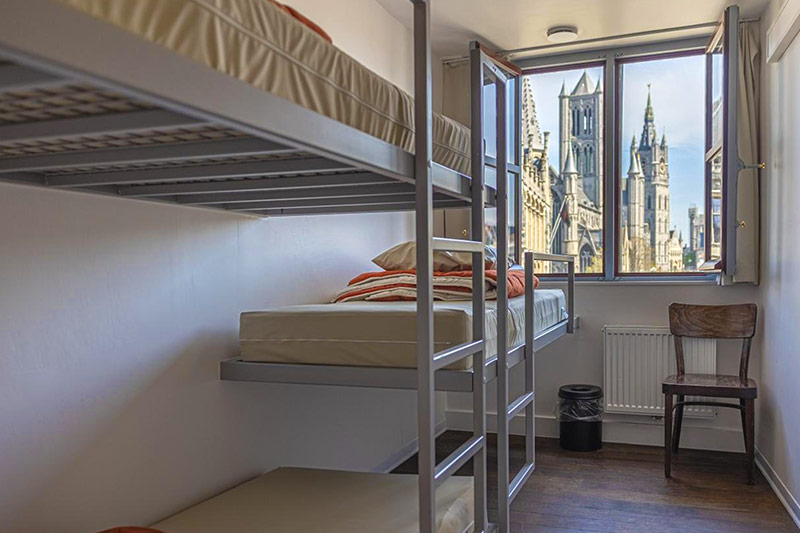
Learn the Basics: Even knowing a handful of words can make a big difference in connecting with locals and showing respect. Learn basic phrases like:
- Hello/Goodbye: Bonjour (French), Hallo (German), Ciao (Italian), Hola (Spanish).
- Thank You: Merci (French), Danke (German), Grazie (Italian), Gracias (Spanish).
- Excuse Me/Sorry: Pardon (French), Entschuldigung (German), Scusa (Italian), Perdón (Spanish).
Pro Tip: If in doubt, start with “Do you speak English?” Many Europeans do, but asking politely can go a long way.
Tipping Practices:
- France/Italy: Your bill often includes a service charge ("service compris"). If not, leave a small change (5–10%).
- Germany: Round up the bill or tip 5–10% directly to the server.
- UK/Ireland: Tips are appreciated, but not mandatory; round up or leave 10–15% for exceptional service.
- Eastern Europe: A 10% tip is customary in restaurants but check your bill to see if it’s included.
Pro Tip: Check the bill for "service charge" or "coperto" (cover charge) to avoid double-tipping.
Dress Codes for Religious Sites: Many religious sites, like churches, mosques, and temples, have specific dress codes.
Understand Social Norms:
- Greetings: In Southern Europe (e.g., Italy, Spain), cheek kisses are common, even among acquaintances. In Northern Europe (e.g., Germany, Scandinavia), handshakes are more common and formal.
- Quiet Hours: Many European countries, especially Germany and Switzerland, observe “quiet hours” during the afternoon and late evening. Avoid loud conversations or music in residential areas.
5. Staying Connected

SIM Cards Vs. eSIMs: Why Choose an eSIM? eSIMs are the most convenient option for staying connected while traveling. They eliminate the hassle of swapping physical SIM cards and can be activated instantly online.
Popular eSIM Providers:
- Airalo: Affordable, country-specific or regional data plans with EU-wide coverage.
- Saily: User-friendly eSIM service offering flexible data plans, ideal for both short trips and extended stays across Europe.
Benefits of eSIMs:
- Activate before you travel or upon arrival.
- No need to hunt for SIM cards at airports or stores.
- Easily switch between plans if you travel to multiple regions.
Physical SIM Cards: If your phone doesn’t support eSIMs, consider a roaming-enabled EU SIM card.
Popular Providers:
- O2: Budget-friendly prepaid options with EU-wide roaming.
- Vodafone: Reliable coverage and data-rich prepaid plans.
- Orange Holiday Europe: A tourist-focused SIM with 20GB+ of data and free roaming in 30 countries.
Where to Buy: Available at airports, convenience stores, or mobile carrier shops. Prepaid plans are best for travelers to avoid contracts.
Pro Tip: Make sure your phone is unlocked before your trip to use eSIMs or international SIM cards seamlessly. Contact your carrier if you’re unsure.
Wi-Fi & Security
- Use a VPN: Public Wi-Fi can be risky. A VPN (Virtual Private Network) encrypts your connection, keeping your personal information safe from hackers.
- Recommended VPNs: NordVPN, ExpressVPN, or Surfshark.
Photo Backup & Cloud Storage: Losing your phone can mean losing all your travel memories. Backup your photos regularly to cloud services like:
- Google Photos: Free storage up to 15GB.
- iCloud: Perfect for Apple users, with affordable upgrade options.
- Dropbox: Great for storing high-resolution images.
Pro Tip: Enable automatic uploads at night when connected to hostel Wi-Fi.
Location Sharing: Share your location with friends or family through apps like Find My iPhone for added safety.
Check out: ADVANCED Travel Tips (NOT for Beginners... But For Experts)
Hostelz.com is the world’s most comprehensive hostel-focused travel platform. We bring together listings from all the major booking sites to help you easily compare prices, see real guest reviews, and find the best deals—no matter where you’re headed. Check out our How It Works page.
Not sure which hostel to pick? Use our Hostel Comparizon Tool to compare your favorite hostels side-by-side before you book.
Let us help you travel smarter and sleep cheaper.
Travel Cheaper, Travel Longer



